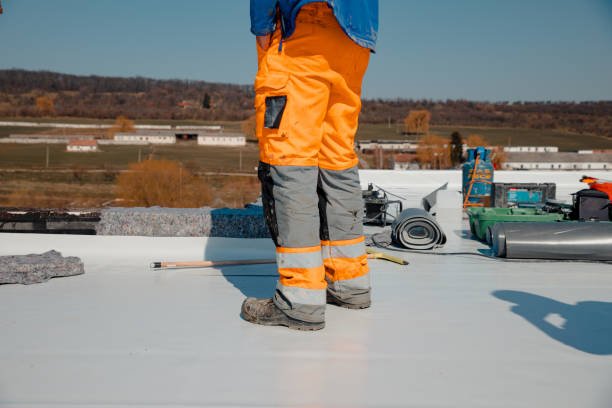How Modern Materials Are Transforming Commercial Roof Design
Modern commercial buildings are changing. Today’s roof is more than just a cover. It’s a key part of building performance. New materials are leading this shift. They bring better durability, energy savings, and smarter design options.
The Shift Toward Smarter Roofing
Traditional roofing had limits. Older systems were heavy and didn’t last long. Maintenance was frequent and costly. Now, contractors use materials that are lighter, stronger, and longer-lasting.
Building owners want value. Modern roofing offers better performance with fewer problems. These systems are designed for today’s needs—energy efficiency, fast installation, and long-term durability.
Energy Efficiency Is Now a Priority
Energy use is a major cost for commercial properties. The roof plays a big role in heat control. Older materials often trapped heat. New materials reflect it. This change lowers cooling bills and keeps buildings comfortable.
Cool roofs with reflective surfaces are common. They reduce the load on HVAC systems. Many new systems also include built-in insulation. Together, these features help buildings stay efficient and meet green building standards.
Stronger, Longer-Lasting Solutions
Durability is another big win. New roofing materials resist UV damage, water, and weather. They don’t break down as fast as older products. This means fewer leaks and repairs over time.
Many systems include advanced coatings. These coatings protect the surface and prevent early wear. A durable roof lowers lifetime costs and extends the building’s value.
Easier and Safer to Install
Modern roofing is also easier to install. Many systems are designed to go on fast with fewer tools. This shortens construction time and saves on labor.
Lighter materials reduce risks during installation. Fewer seams and improved adhesives make the process safer. Fast installs also mean fewer disruptions to business operations.
Sustainability Is Built In
Sustainability matters more now. Many roofing systems use recycled or recyclable materials. Some are designed to pair with solar panels or green roof systems.
These eco-friendly features help meet building codes and certifications. They also support a company’s environmental goals. The roof can now be a big part of a building’s green strategy.
More Options for Design
Modern materials offer more design flexibility. Roofs don’t have to be plain. New systems come in different colors, textures, and shapes. They can match the look of the building while still performing well.
This is especially useful for brands that want a clean, modern appearance. A well-designed roof improves curb appeal and supports a strong brand image.
TPO Roofing and Its Advantages
One modern system that’s gained popularity is TPO Roofing service. It offers a strong balance of durability, energy efficiency, and low cost. TPO is heat-welded, which creates a strong, waterproof seal. It’s ideal for commercial spaces that need a dependable, long-lasting solution.
The Value of Flat Roofing in Modern Designs
Another area where materials have made a big impact is Flat Roofing service. This design is popular for commercial buildings. It supports HVAC units, solar panels, and rooftop access. With newer materials, flat roofs last longer and handle water better. These updates make them more reliable and cost-effective.
Final Thoughts
Modern materials have changed the way commercial roofs are designed. They improve energy use, lower maintenance costs, and add design flexibility. Today’s roofs are built for performance—not just protection. As technology advances, commercial roofing will keep getting smarter, greener, and more efficient.


